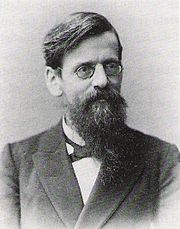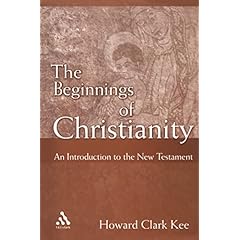My EABS paper is entitled: The Historical Jesus and the Early Christian Gentile Missions - Continuity and Discontinuity.
This paper addresses the issue of continuity and discontinuity between Jesus and the early church regarding the salvation of the Gentiles. The first phase of the study is to examine the variety of Gentile missions in the early church paying particular attention to their distinctive characteristics and motivations. The second phase outlines the basic contours of Jesus’ view of the Gentiles which are shaped principally by his restoration eschatology. The third phase compares and contrasts these perspectives with a view to identifying how the missionary ethos of the early church is both continuous and discontinuous with that of the historical Jesus.
Here's some choice quotes from the work-in-progress:
The irresistible expansion of Christian faith in the Mediterranean world during the first 150 years is the scarlet thread running through any history of primitive Christianity.
- Martin Hengel,
Between Jesus and Paul: Studies in the Earliest History of Christianity (trans. John Bowden; London: SCM, 1983), p. 48.
The mission is not so much a matter of a “realized eschatology” as of a substitute for an eschatology that has been deferred.
- C.K. Barrett, ‘The Gentile Mission as an Eschatological Phenomenon’, in
Eschatology and the New Testament: Essays in Honor of George Raymond Beasley-Murray (ed. W. Hulitt Gloer; Peabody, MA: Hendrickson, 1988), p. 71.
In retrospect, the absence of debate over the Gentile mission as such and the limitation of debate to the status of Gentiles in the church and to relations between them and Jewish believers positively support the Jesuanic origin of that mission, for otherwise the debate would probably have started with the question of evangelizing Gentiles versus waiting for them to stream in at the consummation.
- Robert H. Gundry,
Mark: A Commentary on His Apology for the Cross (Grand Rapids, MI: Eerdmans, 1993), p. 767.
Die Bekehrung der Heiden ist die Erfüllung der Verheissungen an Israel …Dies stimmt mit dem jüdischen Gedankengang überein, nachdem die Heiden in der Endzeit sich dem wiederaufgerichteten Israel anschliessen warden.
- Jacob Jervell, ‘Das gespaltene Israel und die Heidenvolker,’
ST 19 (1965), pp. 80-81.
My ContributionThe obvious problem in addressing this topic is that different groups in the early church sometimes had different ideas about Gentiles or how the Gentiles should come to faith (with or without Torah?). Many of the Hellenists, Paul, Peter, James, the Judaizers and John did not always see eye-to-eye on this topic. After noting this diversity I also argue that:
"At the same time there was some degree of cross-fertilization between the two missions as Barnabas belonged to both the Jerusalem church and also to the Hellenistic Christian mission to the Gentiles. Despite the scholarly penchant for divisions, diversity, and rival factions in early Christianity we are also given a picture of a movement in the New Testament that was in some respects relatively homogenous. Paul’s collection for the saints in Jerusalem was an olive branch trying to bring Gentile and Jewish Christians together. In 1 Cor 15.11, Paul assumes that the Corinthians could have heard the same Gospel from Peter or James and in Gal 1.6-9 the other ‘gospel’ is one different from the one that he and the Jerusalem pillars agreed on. Hill is right to say: ‘Paul assumed that the Jerusalem Christians were Christians, that there was a unity and a consistency to the gospel both they and he preached (Rom. 15:27; Gal. 2:7-10).’ According to Ellis, the apostolic missions of James, Paul, Peter and John worked in a cooperative enterprise to ‘promote the messianic person and teaching of Jesus’. That means that we are dealing with more than two missions and those missions often co-existed, co-operated, clashed, and even coalesced in hybrid form."

 I haven't been able to find out much about the contents, but I imagine that it might be similar to his articles on New Testament study such as the following:
I haven't been able to find out much about the contents, but I imagine that it might be similar to his articles on New Testament study such as the following:

















